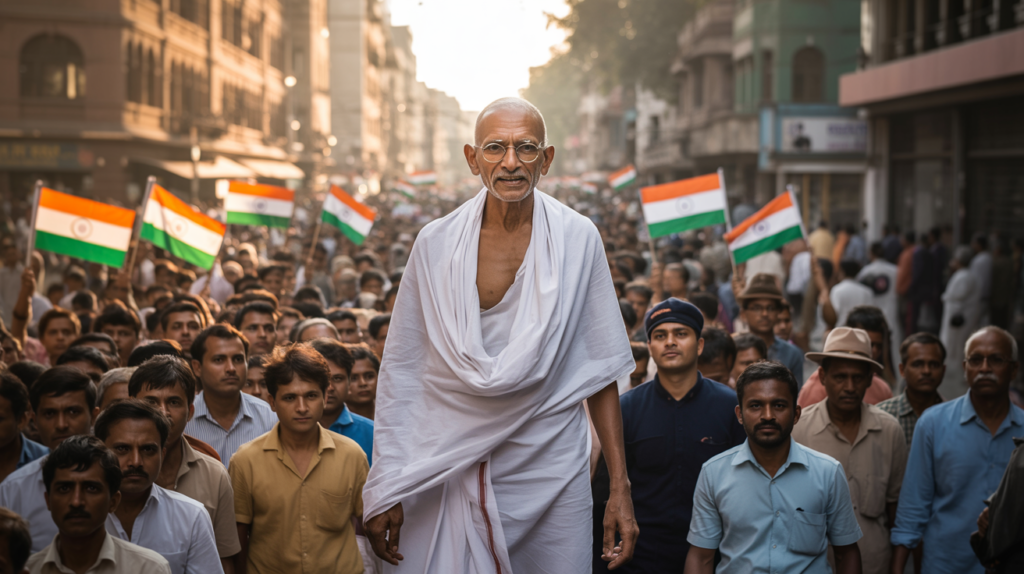Students Launch Gen-Z Economics Magazine Aligned with NEP 2020: 50 Insightful MCQs
Students Launch Gen-Z Economics Magazine Aligned with NEP 2020 The news of Students Launch Gen-Z Economics Magazine Aligned with NEP 2020 has become one of the most discussed educational highlights in India. This initiative reflects how students are not just passive learners but active participants in shaping India’s future economic discourse. The launch connects directly with the goals of the National Education Policy (NEP) 2020, which emphasizes creativity, critical thinking, and real-world application of knowledge. In this blog, we’ll first understand the importance of this event, and then dive into 50 Multiple Choice Questions (MCQs) with answers and explanations, perfect for competitive exams like UPSC, SSC, Banking, Railways, and school quizzes. 🌟 Why This News Matters for Students Student-Centric Initiative – A magazine created by students themselves reflects active learning. NEP 2020 Connection – It aligns with NEP’s vision of skill-based and project-driven education. Innovation in Economics – Students discuss Gen-Z perspectives on global economics, sustainability, and digital economy. Platform for Young Voices – Encourages expression, research, and communication skills. Relevance for GK & Exams – Current affairs combined with education and economics makes it a hot topic for exam preparation. Clearly, the launch of the Gen-Z Economics Magazine Aligned with NEP 2020 represents a blend of academics, creativity, and national educational reform. Key Points: Students Launch Gen-Z Economics Magazine Aligned with NEP 2020 Youth-Led Initiative – The magazine is entirely student-driven, giving Gen-Z a voice in economic discussions. Aligned with NEP 2020 – Supports the National Education Policy’s goals of skill-based, experiential, and multidisciplinary learning. Encourages Financial Literacy – Makes economics simple, relatable, and practical for students. Platform for Innovation – Offers students an opportunity to publish articles, case studies, and creative ideas. Critical Thinking & Problem-Solving – Helps students analyze real-world economic issues beyond textbooks. Collaborative Learning – Involves teamwork among students, guided by mentors and educators. Empowering Youth Voices – Ensures that student perspectives are highlighted in policy-related discussions. Scalable Model – Can inspire similar magazines in other subjects like science, technology, and literature. 21st-Century Skills Development – Builds communication, research, and digital literacy among students. Nation-Building Contribution – Prepares India’s youth to contribute to the vision of a knowledge-driven economy. 50 MCQs on Students Launch Gen-Z Economics Magazine Aligned with NEP 2020 1. Where was the Gen-Z Economics Magazine Aligned with NEP 2020 launched? A) Mumbai B) New Delhi C) Dwarka, New Delhi D) Bengaluru ✅ Answer: C) Dwarka, New DelhiExplanation: The initiative was launched by students at ITL Public School, Dwarka, New Delhi, making it a unique educational milestone. 2. Which policy framework does the magazine align with? A) NEP 1986 B) NEP 2005 C) NEP 2020 D) Five-Year Plans ✅ Answer: C) NEP 2020Explanation: The Students Launch Gen-Z Economics Magazine Aligned with NEP 2020 initiative connects with the National Education Policy 2020 vision. 3. What is the main subject of the Gen-Z magazine? A) Science Innovations B) Economics and Policy C) Literature & Arts D) Environmental Studies ✅ Answer: B) Economics and PolicyExplanation: The magazine focuses on economics from a Gen-Z perspective, aligning it with modern challenges and opportunities. 4. Which school’s students launched the Gen-Z Economics Magazine? A) Delhi Public School B) ITL Public School C) Amity International School D) Kendriya Vidyalaya ✅ Answer: B) ITL Public SchoolExplanation: Students of ITL Public School, Dwarka, are behind this innovative economics magazine aligned with NEP 2020. 5. Which of the following is NOT an objective of NEP 2020? A) Critical Thinking B) Memorization-Based Learning C) Creativity & Innovation D) Multidisciplinary Education ✅ Answer: B) Memorization-Based LearningExplanation: NEP 2020 moves away from rote learning, focusing instead on creativity, skill, and multidisciplinary approaches. 6. What makes the magazine a “Gen-Z” initiative? A) Focus on traditional policies B) Integration of digital economy and modern issues C) Reliance on old textbooks D) Exclusion of student contributions ✅ Answer: B) Integration of digital economy and modern issuesExplanation: The Gen-Z Economics Magazine highlights digital, global, and sustainable aspects relevant to today’s youth. 7. Which global concept is often connected with Gen-Z discussions in economics? A) Feudalism B) Green Economy C) Industrial Revolution D) Barter System ✅ Answer: B) Green EconomyExplanation: Gen-Z emphasizes sustainability, and the green economy is a recurring topic in modern economic debates. 8. Why is the magazine relevant for competitive exams? A) It is a historical event B) It combines current affairs with economics C) It covers Bollywood and entertainment D) It focuses on sports only ✅ Answer: B) It combines current affairs with economicsExplanation: This launch is a trending current affair with direct links to education and economics, useful for GK questions in exams. 9. Which aspect of NEP 2020 is most reflected in this magazine launch? A) Multilingualism B) Rote memorization C) Practical application of knowledge D) Sports development ✅ Answer: C) Practical application of knowledgeExplanation: Students applying economics knowledge in real-world publishing aligns perfectly with NEP 2020 goals. 10. What is one major benefit for students involved in launching this magazine? A) Memorizing policies B) Developing communication, research, and teamwork skills C) Avoiding exams D) Getting free textbooks ✅ Answer: B) Developing communication, research, and teamwork skillsExplanation: Such projects improve real-world skills like writing, analysis, and teamwork, in line with NEP 2020. 11. What does the Gen-Z Economics Magazine aim to promote among students?A) Only theoretical knowledgeB) Practical understanding of economicsC) Entertainment contentD) Political campaigningAnswer: B) Practical understanding of economicsExplanation: The magazine aligns with NEP 2020 by promoting practical, real-world economics for student learning. 12. In which year was the National Education Policy (NEP) launched?A) 2018B) 2019C) 2020D) 2021Answer: C) 2020Explanation: NEP 2020 was approved and launched in July 2020 to reform the Indian education system. 13. Who is expected to benefit most from the Gen-Z Economics Magazine?A) Only teachersB) Only professionalsC) Students and youthD) PoliticiansAnswer: C) Students and youthExplanation: The magazine is created by and for students, empowering young learners. 14. NEP 2020 emphasizes which of the following?A) Rote learningB) Creativity and critical thinkingC) Limiting digital learningD) Reducing extracurricularsAnswer: B) Creativity and critical


